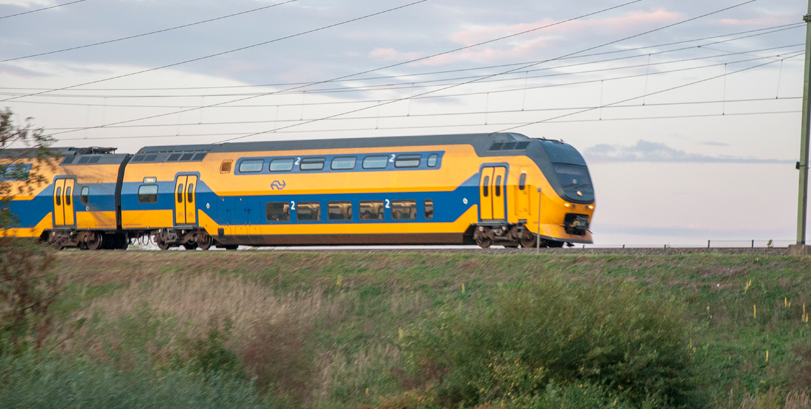NS – Energy-efficient Railway Timetabling #SWI2016
Environmental and economic considerations urge companies to seek better, more efficient ways of using available resources. Energy is one of these resources, and railway systems are large consumers of electricity, indeed. Even the slightest improvement in the energy consumption of trains can lead to very visible effects, helping to reduce CO2 emissions and to improve the efficiency of the railway system.
In this project, we investigate the link between the railway timetable and the consumption of energy. In particular, we aim to improve the energy efficiency of the timetable. We focus on the logistic aspects only; all engineering solutions are out of scope.
The energy consumption of a single train is a well-studied function of the train’s speed and acceleration. This function is applicable once the train is in motion. There is, however, an additional element: a departing train has a peak in its energy consumption during a short amount of time. The timetable and the power supply system must be designed in such a way that the latter can accommodate not only the steady power consumption of the running trains but also the peaks caused by the departing trains, especially near the large stations. In fact, train operators are billed not only for the actual measured energy consumption but also for the highest peak consumption during a certain period of time.
The goal of this project is to decrease both the peak energy consumption and the total energy consumption of the trains operated according to the timetable. Obviously, the improvement in energy consumption could be achieved at the cost of a severely inferior service to the passengers, e.g., by canceling all trains. This is clearly an undesirable solution. Therefore the problem is to develop a trade-o between energy consumption and quality of service for the passengers.
It is a challenging task already to design a timetable from scratch. Therefore, in this project, a reference timetable is given, and the aim is to slightly modify it so that its energy consumption is enhanced. The modified timetable still has to satisfy all commercial and technical timetabling requirements. Part of the challenge is to develop methods that are suitable for dealing with the temporal and spatial scheduling and routing problems represented in the available data sets.
The proposed models can be tested on realistic data sets of Netherlands Railways (NS). The data concerns the 1-hour train timetable of part of the Dutch railway network. It describes the planned departure and arrival times of the trains together with the constraints that have to be satisfied. The constraints include the minimum travel times between stations and the minimum dwell times in stations, but also safety aspects as described by the minimum time between consecutive trains on a line segment.

